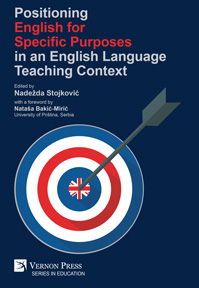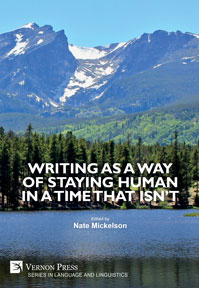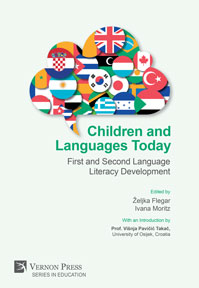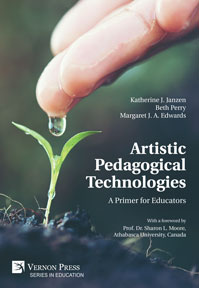How to Actively Engage Our Students in the Language Classes
Carmela B. Scala (Ed.)
by John Bakos (Indiana State University), Valentina Ornaghi (Italian Institute of Oriental Studies (ISO), University “La Sapienza”, Italy), Ching-yi Amy Juan (University of Milan), Silvia Tiboni-Craft (Wake Forest University), Qiaona Yu (Wake Forest University), Jasmine Yu-Hsing Chen (Utah State University), Eda Basak Hancı-Azizoglu (Mediterranean University, Turkey), Maha Alawdat (Kaye Academic College of Education, Israel; Ort Abu Rabe’a Multidisciplinary School, Israel), Stefano Maranzana (Southern Methodist University in Dallas, Texas), Elena De Costa (Carroll University, Waukesha, Wisconsin), Iwona B. Lech (University of Illinois), Yongtaek Kim (Georgia Institute of Technology), Hyunkyu Yi (Columbia University), Mina Lee (Defense Language Institute Foreign Language Center, Monterey, CA), Seung-hwan Shin (University of Pittsburgh), Neha Divekar (Symbiosis Institute of Technology, Symbiosis International University, Pune)
Purchase this book
(click here to change currency)
New technologies and emergency circumstances vigorously influence everyday lives and individuals. As a result, undeniable repercussions on the teaching/learning process of a foreign language as SL, require substantial planning and implementation of suitable activities by applying innovative instruments and environments to learners’ different levels and providing inclusive teaching and active learning. In this innovative contribution, powerful strategies of linguistic approaches are highlighted: from making or watching short videos and asynchronous lessons to creating 3D maps or puppet shows. Detaching themselves from canonical approaches, the authors emphasise that introducing impactful and challenging cross-curricular and cultural activities aim to strengthen linguistic skills, improve vocabulary and encourage oral production. Cooperative learning and interdisciplinary approaches overtake traditional classes and develop interaction and creativity in more globalized contexts. Moreover, relevant theories, sources and visual aids, through tables or graphs, provide substantial references to the thesis and important information and feedback on the results and future developments.
Every chapter presents innovative research, showing how the new integration of technology and Web 2.0 tools in West and East academic courses is an original resource to create a constructive environment for Second Language Acquisition. They clearly prove how authentic language learning experiences can effectively take place, using educational cartoons, ‘cortometrajes,’ short films, spaces such as Online Informal Learning of Language, Introducing new pedagogical models, like the ‘Kubo Project,’ inspired by the Content and Language Integrated Learning (CLIL) method.
Finally, the authors investigate the new technologies' benefits and limits, suggesting creative approaches related to real-world contexts and learners’ problems and projects, and offer an enjoyable interpretation of how humour positively affects students’ attitude towards learning languages.
Dr. Paolo Nitti
Professor of Cognitive Linguistics
Università degli Studi dell'Insubria, Italy
The pedagogical book, “How to actively engage our students in the language classes” edited by Carmela B. Scala, is very important for the field of teaching and learning […]
[…] [It] will contribute to the field, appealing to language instructors in K-12 and college and universities.
Dr. Chiara De Santi
Modern Languages
Farmingdale State College
In a world that moves at a speed that only a few years ago seemed impossible to achieve, our students are used to having the universe at their fingertips and breathing technology. As educators in the 21st century, we need to understand its impact on society, especially on our students’ learning experience, and find a way to make it work to our, and most importantly, their advantage. This edited volume presents some inspiring research in second language acquisition, focusing on active learning, cooperative and collaborative approach, and other innovative strategies to engage the students and promote learning.
List of Figures
List of Tables
Foreword
Chapter 1 Incorporating Last Week Tonight into an ESL/EFL Active Learning Classroom
Jon Bakos
Indiana State University
Chapter 2 Online Teaching of Chinese as a Second Language in an Extended COVID-19 Situation: How to Engage Students in Active Learning
Valentina Ornaghi
Italian Institute of Oriental Studies (ISO), University “La Sapienza”
Ching-Yi Amy Juan
University of Milan
Chapter 3 Traveling from Italian to Chinese: An Interdisciplinary Course Design
Silvia Tiboni-Craft
Wake Forest University
Qiaona Yu
Wake Forest University
Chapter 4 Bringing Culture into Language Classrooms: Creative Puppetry and the Teaching of Chinese as a Foreign Language
Jasmine Yu-Hsing Chen
Utah State University
Chapter 5 Documentary Filmmaking: A Digital and Innovative Language Teaching Method
Eda Basak Hancı-Azizoglu
Mediterranean University
Maha Alawdat
Academic College of Education and Ort Abu
Rabe’a Multidisciplinary School
Chapter 6 Animated Cartoons to Promote 'Real Language' Learning: Attitudes of Undergraduate Students of Italian
Stefano Maranzana
Southern Methodist University in Dallas
Chapter 7 A Pedagogical Model for Integrating Interdisciplinary Approaches in Second Language Acquisition
Elena De Costa
Carroll University
Chapter 8 Domesticating the Virtual Wild: Implementing Online Informal Language Learning in the Formal Language Classroom
Iwona B. Lech
University of Illionois
Chapter 9 The Kubo Project: Content- Language-Technology Integration through Literature
Kim Yong-Taek
Georgia Institute of Technology
Shin Seung-hwan
University of Pittsburgh
Lee Mina
Defense Language Institute Foreign Language Center, Monterey
Yi Hyunkyu
Columbia University
Chapter 10 Assimilation of Web 2.0 Tools in a Language Classroom for Authentic Novel Learning Experience in India
Divekar Neha
Symbiosis Institute of Technology, Symbiosis International University, Pune
List of Acronyms
List of Contributors
Carmela B. Scala received her Ph.D. in Comparative Literature from the City University of New York. She is the Director of the Italian Language Program at Rutgers University and the Study Abroad Program Director. She is the founder and chief editor of the academic journal 'Language Teaching and Technology' (LTT). She has won an entrepreneurial grant to develop a Professional Development workshop entirely online for Italian teachers and many other small grants to create innovative online language courses. She received the prestigious Rutgers Ernest E. McMahon Class of 1930 Award for the 2019-2020 academic year.
Her main field of research is Baroque literature, fairytales, folklore, and dialect literature. She has published a book on Basile's work titled 'Fairytales – A World Between the Imaginary: Metaphors at Play in “Lo cunto de li cunti” by Giambattista Basile' (Cambridge Scholars Publishing, 2015) and an Italian reader, 'Un viaggio fantastico nella lingua e nella cultura italiana' (Kendall Hunt Publishing Co., 2016). She is also interested in contemporary literature and has published a book on contemporary cinema, 'New Trends in Italian Cinema: “New” Neorealism' (Cambridge Scholars Publishing, 2013).
Her last article, "Matteo Garrone's The Tale of Tales-Visual Metaphors and Transmedial Storytelling," was published in the book entitled 'The Body of Naples: Corporality and Performativity in Baroque Naples' (Lexington Books, 2017). She has recently published a book, 'From Design to Teaching: Granting Our Students An Engaging Learning Experience Online' (Cambridge Scholar Publishing, 2021); an article, “How to Foster Equality in The Language Classroom,” in 'Rhetoric and Sociolinguistics in Times of Global Crisis' (IGI Global, 2021); and “Replacing the 'melting pot' with a 'colorful mixed salad' in the language classroom,” in 'Global and Transformative Approaches Toward Linguistic Diversity' (IGI Global, 2022). She has also published articles on language acquisition in the NEMLA Italian Studies journal.
Active Learning; Collaborative Learning, Cooperative Learning, Task Based Teaching; Technology and Language Learning
See also
Bibliographic Information
Book Title
How to Actively Engage Our Students in the Language Classes
ISBN
978-1-64889-522-7
Edition
1st
Number of pages
204
Physical size
236mm x 160mm

![How to Actively Engage Our Students in the Language Classes [Hardback]](/file/18774/a9b20f0c5abb68ff62733414abdc49cc/1666707418.jpg)






